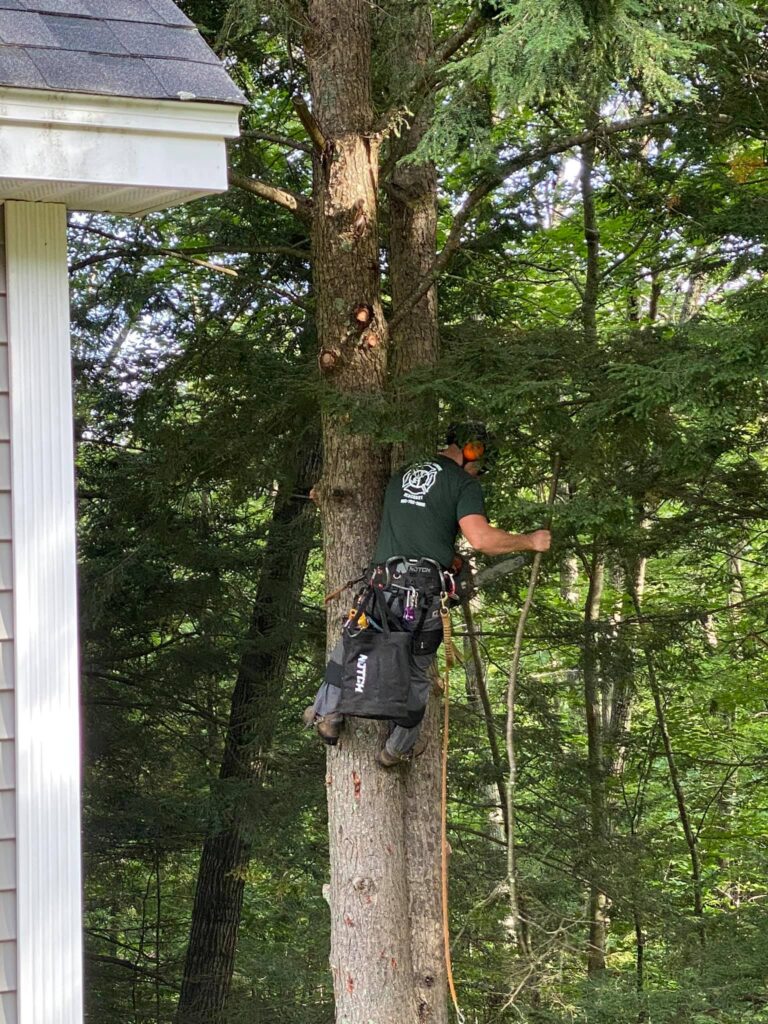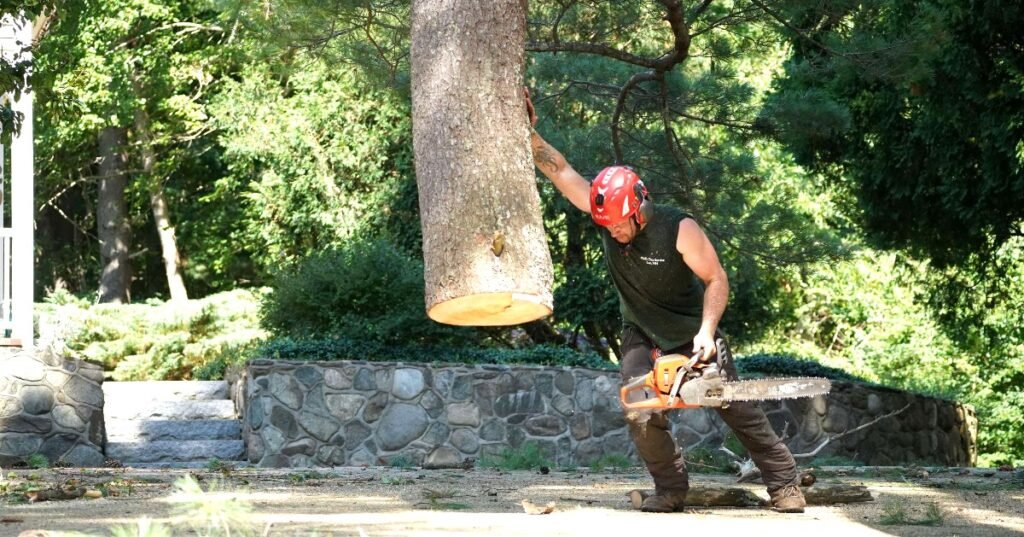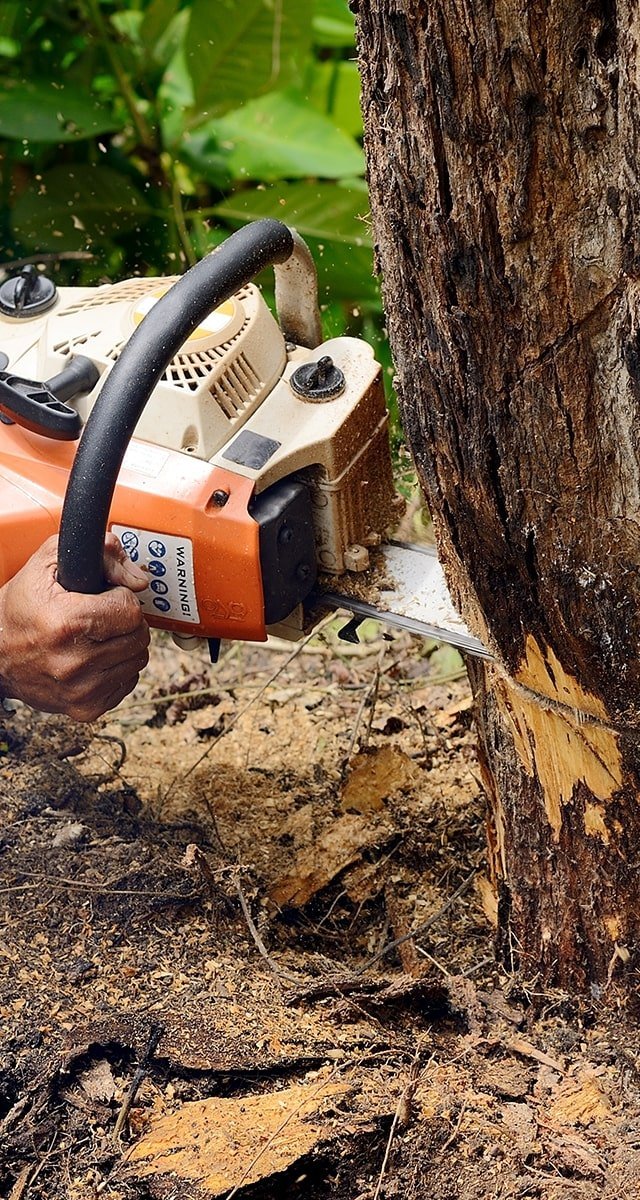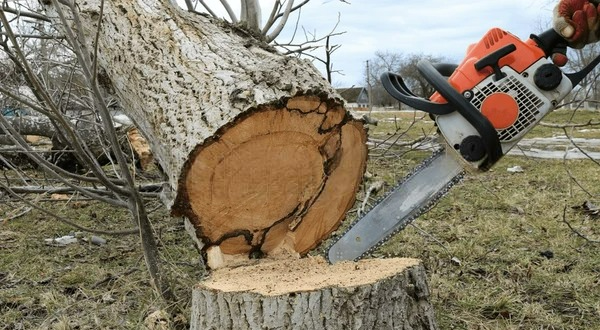Why Fall Is the Best Time for Tree Removal
You’re sipping your morning coffee, gazing out at your yard as the leaves turn those gorgeous reds and golds. But instead of feeling that cozy autumn vibe, you’re worried about that old oak leaning a little too close to your house. Sound familiar?
Here’s something that might surprise you, that nagging worry could actually be a blessing in disguise. Fall isn’t just nature’s most beautiful season; it’s also the absolute best time for tree removal in New Hampshire. After helping countless families in Lee and the surrounding areas for over 10 years, I can tell you there’s something almost magical about tackling tree projects when the leaves start falling.
Why does timing matter so much? Well, imagine trying to assess a tree’s health when it’s covered in a thick canopy of summer leaves. It’s like trying to diagnose a problem while wearing sunglasses in a dark room. Fall strips away all that green camouflage, revealing exactly what’s going on with your trees. Plus, your yard is about to enter its dormant phase, which means less stress on surrounding plants and easier cleanup for everyone involved.
Ready to discover why seasonal tree removal during autumn could be the smartest decision you make for your property this year?

The Science Behind Fall Tree Removal
There’s actually some fascinating biology at work here. When autumn arrives, trees naturally begin their dormant phase. Think of it like they’re going to sleep for the winter. This biological shift makes fall the perfect window for tree cutting services.
During dormancy, trees slow down their metabolic processes dramatically. Sap flow decreases, which means less “bleeding” when cuts are made. This reduces stress on the tree if you’re doing selective removal around other healthy trees. It’s like performing surgery when the patient is already under anesthesia.
But here’s where it gets really interesting. Research from the International Society of Arboriculture shows that tree removal during dormant seasons results in 40% less impact on surrounding root systems. Why? Because neighboring trees aren’t actively growing and competing for resources. They’re conserving energy, which means they can better handle the minor disruption of losing a nearby tree.
Here’s what happens when you remove trees in fall versus other seasons:
Fall removal benefits:
- Minimal sap loss and tree stress
- Clearer visibility of structural issues
- Reduced impact on wildlife (most birds have finished nesting)
- Ground conditions are typically drier and more stable
Spring/summer removal drawbacks:
- Active growing season means maximum stress
- Dense foliage hides potential hazards
- Wet soil conditions can damage lawns
- Peak nesting season for wildlife
Perfect Weather Conditions for Safe Tree Work
Let’s talk about something every New Hampshire resident knows intimately: our weather. Fall gives us this beautiful window of opportunity that’s absolutely perfect for tree removal projects.
October and November typically bring us those crisp, clear days with lower humidity. As someone who’s spent countless hours in trees (safely, with proper equipment!), I can tell you that comfortable working conditions aren’t just nice to have, they’re essential for precision and safety.
Consider what happens during other seasons. Summer heat can be brutal for tree crews working with heavy equipment and climbing gear. We’re talking about physical work that requires focus and stamina. When temperatures soar into the 80s and 90s, even the most experienced professionals face challenges with fatigue and heat stress.
Winter? Well, that’s a whole other story. Ice-covered branches become unpredictable, and frozen ground makes equipment positioning tricky. I’ve had customers call during blizzards, and while we absolutely handle emergency situations, planned removals are much safer when Mother Nature cooperates.
Spring brings its own complications with mud season. Anyone who’s lived in New Hampshire knows that period when your driveway becomes a swamp. Heavy equipment and soggy conditions don’t mix well, and the last thing you want is a bucket truck getting stuck in your yard.
But fall? Fall is like the Goldilocks season, everything is just right. Moderate temperatures, stable ground conditions, and predictable weather patterns. Your tree removal crew can work efficiently and safely, resulting in better outcomes for your property.
Ideal fall conditions for tree work:
- Temperatures between 40-70°F
- Lower humidity levels
- Minimal precipitation
- Stable, firm ground conditions
- Good visibility without summer haze

Getting Your Property Ready for Winter
Now here’s where fall landscaping prep becomes crucial. Removing problematic trees in autumn isn’t just about addressing current issues, it’s about preventing winter disasters before they happen.
Every winter, I get emergency calls from homeowners dealing with storm-damaged trees. Heavy snow loads, ice storms, and strong winds can turn a questionable tree into a property-threatening hazard overnight. The most heartbreaking calls are the ones that start with “I knew we should have taken that tree down…”
Here’s a real example from last year. The Johnsons in Lee had this massive pine that had been concerning them for months. They kept saying they’d deal with it “next spring.” Then we got that ice storm in December, you probably remember it. That tree came down right across their driveway, blocking them in for three days and causing significant damage to their garage.
Compare that to the Smiths, who called us in October for a similar situation. We removed their problematic oak on a beautiful autumn day, cleaned everything up perfectly, and they spent the winter with complete peace of mind. When that same ice storm hit, they were sipping hot cocoa by the fireplace instead of calling emergency tree services.
Winter preparation checklist:
- Identify trees with structural weaknesses
- Remove trees too close to structures or power lines
- Clear dead or diseased trees that could fall
- Address trees with poor root systems
- Plan for post-removal landscaping projects
The psychological benefit is huge too. There’s something incredibly satisfying about having your property buttoned up for winter. You know those trees that keep you awake during windstorms, wondering if tonight’s the night they’ll come down? Removing them in fall means sleeping soundly all winter long.

Cost Savings and Scheduling Advantages
Let me share something that might surprise you about the tree removal business. Fall is actually when you’ll find the best value for your money, and I’ll tell you exactly why.
During peak seasons, especially late spring and early summer, tree companies are absolutely swamped. Storm cleanups from winter damage, spring growth spurts that reveal new problems, and everyone suddenly wanting their yard perfect for summer entertaining. It’s basic supply and demand economics.
But fall? Fall is when we can really take care of our customers properly. Our schedules have more flexibility, which means we can plan your project thoroughly instead of rushing between emergency calls. This translates to better attention to detail, more personalized service, and yes, often better pricing.
I’ve been in this business long enough to know that quality work takes time. When we’re not racing from one storm cleanup to the next, we can focus on doing things right the first time. That might mean taking extra care around your prized flower beds or spending additional time ensuring perfect cleanup.
Here’s what seasonal tree removal in fall typically offers:
- More flexible scheduling options
- Detailed project planning time
- Better pricing due to lower demand
- Crew availability for complex projects
- Time for proper site preparation
The scheduling advantage is particularly important for larger projects. If you need multiple trees removed or have a complex situation involving power lines or tight spaces, fall gives us the time to coordinate properly. We can secure any necessary permits, coordinate with utility companies if needed, and plan the most efficient approach.
Summer projects often feel rushed because there’s always another emergency call waiting. Fall projects feel thorough and thoughtful because we have the luxury of time to do things properly.
Average cost differences by season:
- Fall: Baseline pricing with potential discounts
- Winter: Premium pricing for emergency/urgent work
- Spring: Elevated pricing due to high demand
- Summer: Peak pricing, limited availability
Making the Smart Choice for Your Property
So here you are, probably looking out at your yard right now and thinking about that tree you’ve been worried about. Maybe it’s leaning a little more each year, or perhaps the last storm left some concerning damage you’ve been putting off dealing with.
Here’s what I want you to remember: every day you wait is another day that tree could become a bigger problem. But the good news? If you’re reading this during fall, you’re in the perfect position to handle it right.
Tree removal isn’t just about eliminating problems, it’s about creating opportunities. Maybe removing that overgrown pine will give your garden the sunlight it’s been missing. Perhaps taking down that problematic oak will create space for a beautiful new landscape design. Sometimes what feels like losing something is actually about gaining so much more.
The families we’ve helped over the years consistently tell us the same thing: they wish they’d called sooner. Not because something terrible happened, but because they had no idea how much better their property could feel with those nagging worries eliminated.
Don’t let another winter pass wondering if tonight’s the night that tree comes down. Fall landscaping prep starts with making smart decisions about which trees stay and which ones need to go. And there’s never been a better time than right now to make that call.
At Phil’s Tree Service Seacoast, we’re here to help you make the smartest choice for your property. We’ll assess your trees honestly, explain your options clearly, and if removal is the right choice, we’ll handle it with the care and professionalism your property deserves.
Ready to sleep soundly through winter storms? Give us a call at (603) 762-3805 or visit philstreeseacoast.com to schedule your free, no-obligation consultation. Let’s trim away those worries before the snow flies.

Frequently Asked Questions About Fall Tree Removal
Q: Is it safe to remove trees when they still have leaves?
A: Absolutely! In fact, partially leafed trees in early fall are often easier to work with than fully bare trees. Our certified arborists can better assess branch weight distribution, and the remaining leaves help us understand the tree’s overall health condition.
Q: How late in the fall can I schedule tree removal in New Hampshire?
A: We typically recommend completing tree removal projects by late November, before the ground freezes and winter weather becomes unpredictable. However, we do provide emergency services year-round for urgent situations.
Q: Will removing trees in fall damage my lawn less than other seasons?
A: Yes! Fall removal typically causes minimal lawn damage because grass is entering dormancy and soil conditions are more stable. Any minor damage from equipment will recover naturally by spring, especially if you follow up with proper fall landscaping prep.

